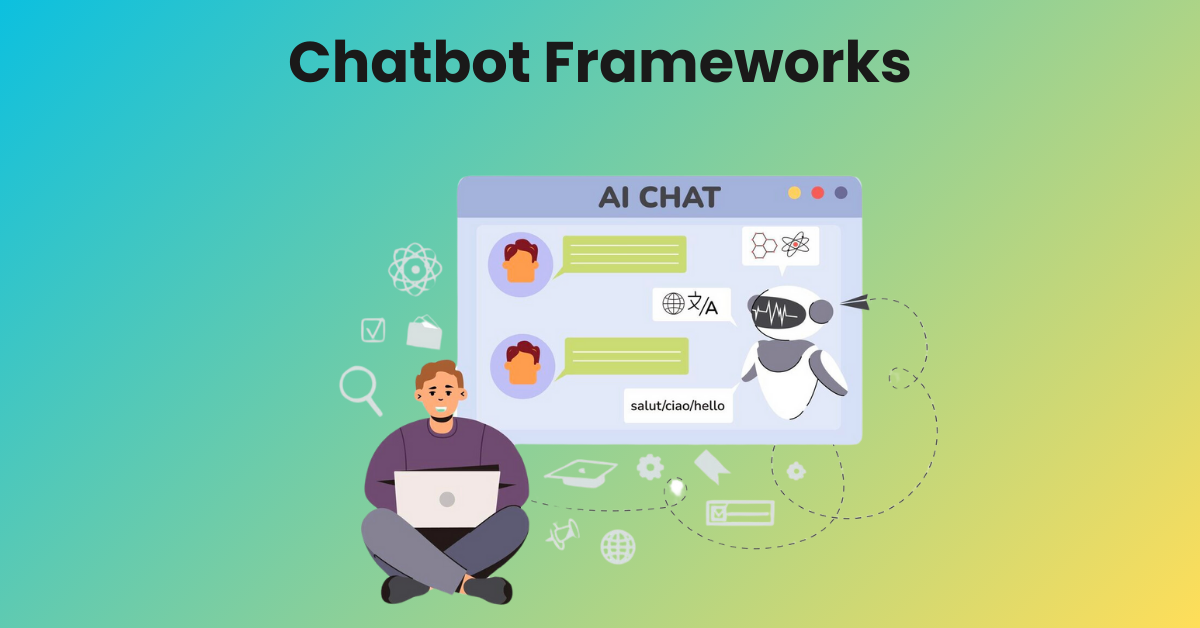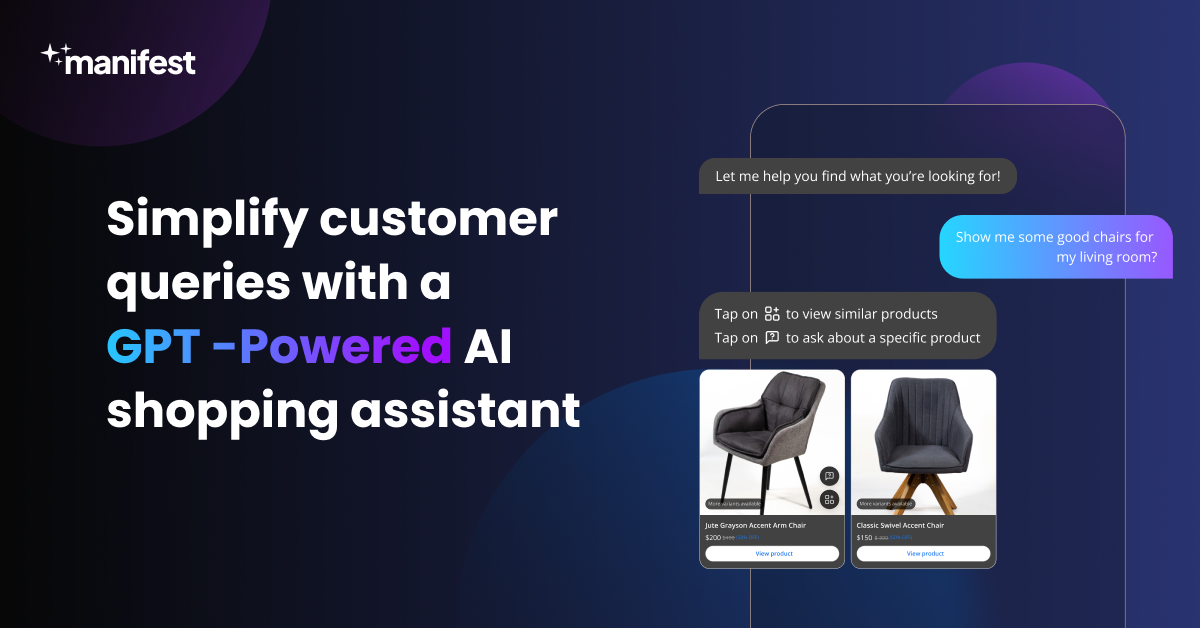Chatbot Frameworks: Crafting Intelligent Conversations

In this exploration of chatbot frameworks, we dive into the essential elements that power the intelligent interactions between automated systems and users. The focus is on the architecture behind chatbots, enabling them to mimic human-like conversations and provide helpful responses. This guide will shed light on how these frameworks are designed and implemented, making chatbots not just responsive but genuinely interactive. It's an insightful look at the technology driving modern customer engagement, offering readers a deeper understanding of what goes into creating a chatbot that can effectively communicate and engage with users in various contexts.
What is a chatbot framework?
A chatbot framework is essentially the foundation or platform used to build and deploy chatbots. It provides the necessary tools and infrastructure for creating chatbots that can simulate human conversations. These frameworks typically include pre-built templates, development interfaces, and integration tools, making it easier for developers to craft and customize chatbots to suit specific needs. They support various functionalities like natural language processing, machine learning, and integration with other services or APIs. This enables chatbots to understand and respond to user queries in a more human-like manner, handling tasks ranging from customer service to data collection and more. By using a chatbot framework, developers can streamline the development process, ensuring a more efficient and effective deployment of chatbots in various applications.
Why use a chatbot framework?
Using a chatbot framework offers several advantages for businesses and developers alike:
- Efficient Development: Frameworks provide essential building blocks for chatbots, speeding up the development process by offering pre-built templates and tools.
- Cost-Effective: It reduces the need for extensive coding, lowering development costs and resources.
- Customization: Chatbot frameworks allow for customization, enabling developers to tailor chatbots to specific business needs and user interactions.
- Integration Capabilities: They often support integration with various platforms and APIs, enhancing the chatbot's functionality.
- Scalability: Chatbot frameworks are designed to be scalable, accommodating the growing needs of a business.
- User Experience: They help create chatbots that offer a more natural and engaging user experience, thanks to built-in natural language processing capabilities.
- Consistent Updates: Frameworks are regularly updated with new features and improvements, keeping the chatbot technology current.
- Data Analytics: Many frameworks include analytics features, providing insights into user interactions and chatbot performance.
5 best open-source chatbots
Here is the list of 5 best open-source chatbots:
Ana.Chat

Ana.Chat, recognized as the world's first open-source chatbot framework, is designed for creating and deploying chatbots across multiple platforms. It includes Ana Studio for building chatbots, a Chatbot Simulator for testing, and an Ana Chat Server for backend support. The chatbot testing framework also offers powerful SDKs for Android and iOS.
Pros:
- Versatile for various platforms.
- Comprehensive tools for chatbot development framework and testing.
Cons:
- May require technical expertise for effective use.
Pricing:
Ana.Chat is available for free, which is a significant advantage for developers on a budget.
GitHub Support:
The framework offers GitHub support, allowing developers to access its source code and contribute to its development.
Rasa

Rasa is the best open-source chatbot framework known for its strong customization capabilities, making it ideal for creating complex and personalized chatbots. It's particularly suitable for enterprise-level applications due to its advanced conversational AI features and integration options.
Pros:
- Highly customizable, fitting specific business needs.
- Offers detailed conversation management and data privacy controls.
- Supports multiple languages.
Cons:
- Can be complex to set up, requiring a steep learning curve.
- More suited for large-scale or technical users than small businesses.
Pricing: Rasa operates on a paid model. For specific pricing details, you would need to contact their sales team.
GitHub Source Code: Rasa's source code is available on GitHub, allowing developers to contribute to or modify the code as needed.
Wit.AI

Wit.AI, developed by Meta, is an open-source chatbot platform known for its ease of integration with Facebook pages and Meta apps. It supports simple text-to-code conversion and is accessible in 132 languages, making it versatile for various applications like chatbots, mobile apps, and smart devices.
Pros:
- Extensive language support.
- Large developer community.
- Easy integration with Meta platforms.
Cons:
- Limited customization outside Meta ecosystem.
- May not be as robust for complex, non-Meta integrations.
Pricing: Wit.AI is free for all Meta account holders.
For access to the GitHub source code and more detailed information, you can explore Wit.AI's official page.
OpenDialog

OpenDialog is an open-source chatbot platform designed for creating AI-powered chatbots and virtual assistants. It's particularly suited for organizations and businesses seeking interactive ways to connect with their audience.
Pros:
- Offers a no-code conversational AI platform, making it accessible for non-technical users.
- Comes with a free eBook guide and a supportive community for assistance.
- Provides OpenDialog Academy for learning and an easy-to-understand interface.
Cons:
- Might be less tailored for very specific or niche business requirements.
- The learning curve for optimizing its full potential.
Pricing: OpenDialog offers customized pricing plans, which can be requested through their website.
GitHub Source Code: The source code for OpenDialog is available on GitHub, providing transparency and the opportunity for community contributions.
Microsoft Bot Framework

The Microsoft Bot Framework, an open-source platform, allows for the creation of chatbots with AI and natural language processing capabilities.
Pros:
- Offers extensive integration with Microsoft products and services.
- Features a robust, open, and extensible SDK.
- Provides enterprise-grade solutions suitable for complex applications.
Cons:
- Might have a steep learning curve for beginners.
- Primarily Windows-centric, which could limit cross-platform development.
Pricing:
- The chatbot implementation framework is available for free, with premium channel access at $0.50 per message.
GitHub Source Code:
- Developers can access the source code and contribute to the framework on GitHub, fostering a collaborative development environment.
Manifest AI

Manifest AI, a third-party AI chatbot for Shopify stores, offers innovative features to enhance the online shopping experience. Manifest AI chatbot framework is very simple and effective for all Shopify stores. It utilizes GPT technology for intelligent customer interactions and personalized shopping assistance.
Pros:
- Personalized Recommendations: Provides product suggestions based on customer interactions.
- Enhanced Customer Engagement: Engages customers with intelligent conversations, improving user experience.
- FAQ Handling: Efficiently addresses common queries, enhancing customer support.
Cons:
Platform Specificity: Primarily designed for Shopify, limiting its use in other e-commerce platforms.
Pricing: Manifest AI's pricing details starts from $39/month with a 14 day free trial.
Conclusion
Our exploration into the world of chatbot frameworks reveals the significant strides in digital communication technology. These frameworks provide the backbone for creating sophisticated, user-friendly chatbots that enrich customer interaction. As we embrace these advancements, businesses are equipped to deliver more personalized and efficient customer experiences. The rise of intelligent chatbot interactions signifies a shift towards more dynamic, responsive, and engaging digital platforms. This understanding is crucial for anyone looking to implement or innovate in the realm of chatbot technology, making it a vital component of modern customer engagement strategies.

.png)
